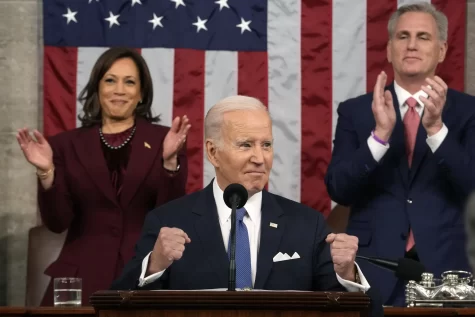Eye institute hopes to expand research and building
Oakland University’s Eye Research Institute, on the fourth floor of Dodge Hall of Engineering, continues its research and plans expansion.
ERI has received steady funds from the National Institute of Health, especially its National Eye Institute, since it was founded in 1968. And now, the institute plans to continue its current research of eye diseases, and also expand and cover more of the roof.
The ERI Director, professor Frank Giblin, said the ERI submitted several grants to try to take its share from NIH’s $10.4 billion stimulus funds to expand the rooms, buy equipment, increase the number of faculty members and broaden ERI’s scope.
Giblin said that ERI’s six faculty members — in conjunction with 12 clinical faculty from Beaumont Hospitals — currently do research on age-related macular degeneration, retinitis pigmentosa, macular hole, cataract, retinopathy of prematurity, retinal detachment, glaucoma and night blindness.
But he said he would like ERI to also tackle diabetic retinopathy and corneal diseases.
“We like to have experts in all parts of the eye,” he said.
He would also like to establish a retinal pediatric disorder laboratory with Beaumont, for which he has already received a $500,000 funding commitment.
“It happens to babies of low birth weight,” Giblin said. “Now they can keep [premature babies] alive, but they come up with diseases.”
He said although some ERI faculty members, like Barry Winkler, teach classes, they are not required to. In return, they are obligated to raise half their salary from NIH grants.
“It’s becoming tougher and more competitive,” he said. “When you put in a NIH application, you have to be in the top 15 out of 100. There’s more competition and less funds.”
Professor Winkler and associate professor Shravan Chintala each received about $360,000 from NIH stimulus funds to support their research on macular degeneration and glaucoma, Giblin said.
Also, Giblin, associate professors Andy Goldberg and Kenneth Mitton each received $15,000 to $28,000 from NIH stimulus funds to pay salaries of OU undergraduates to conduct vision research in the ERI during the summer.
ERI has already hired seven student assistants, for the summer, who each receive $3,000 scholarships and work with mentors for 12 weeks.
“After 12 weeks, some of them continue working,” Giblin said, adding that they currently have a total of 35 student assistants.
ERI faculty do a variety of research. Mitton and Giblin said that although practical treatments and cures have been found in the type of research ERI does, ERI does not directly try to invent cures or treatments.











